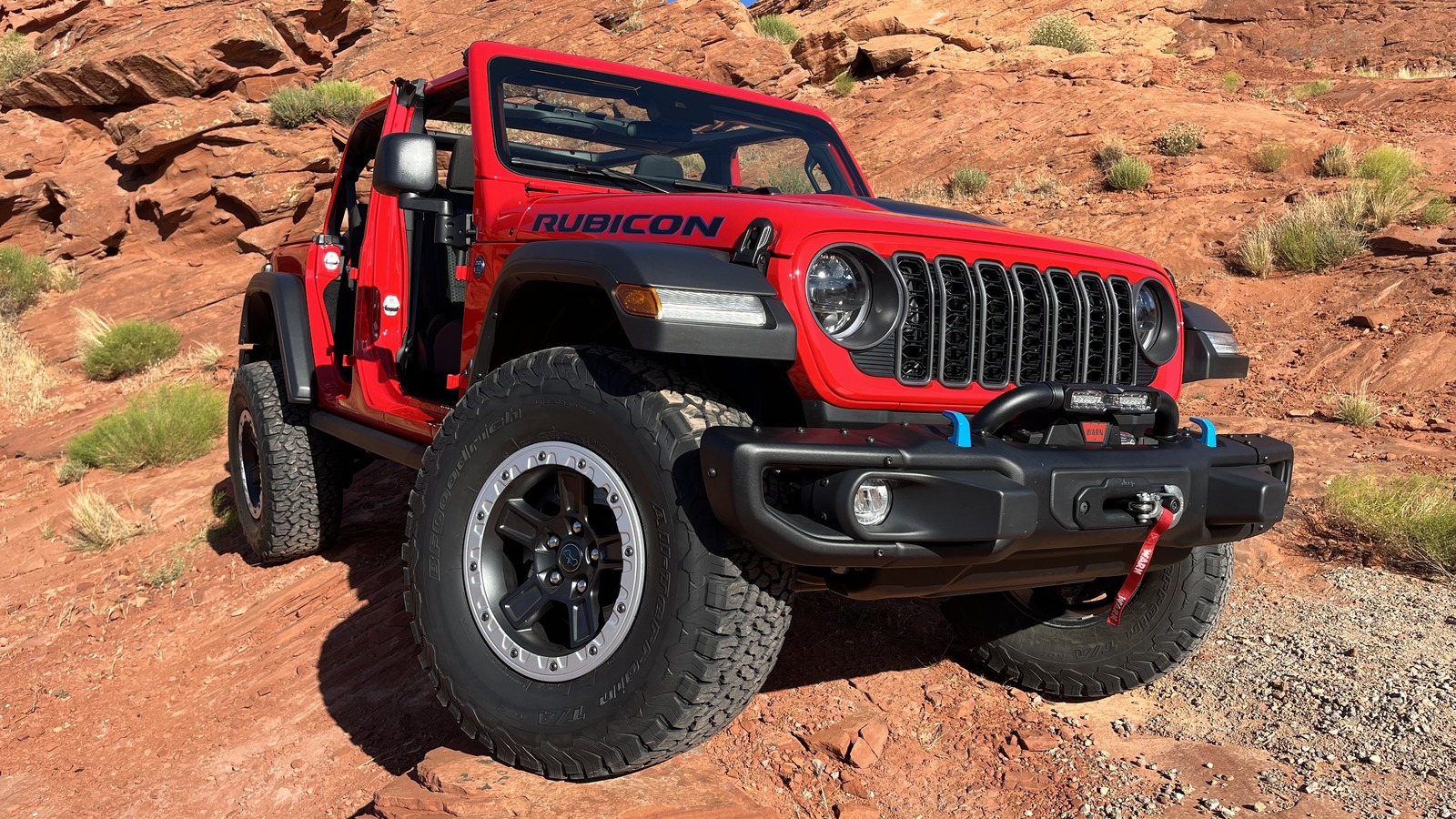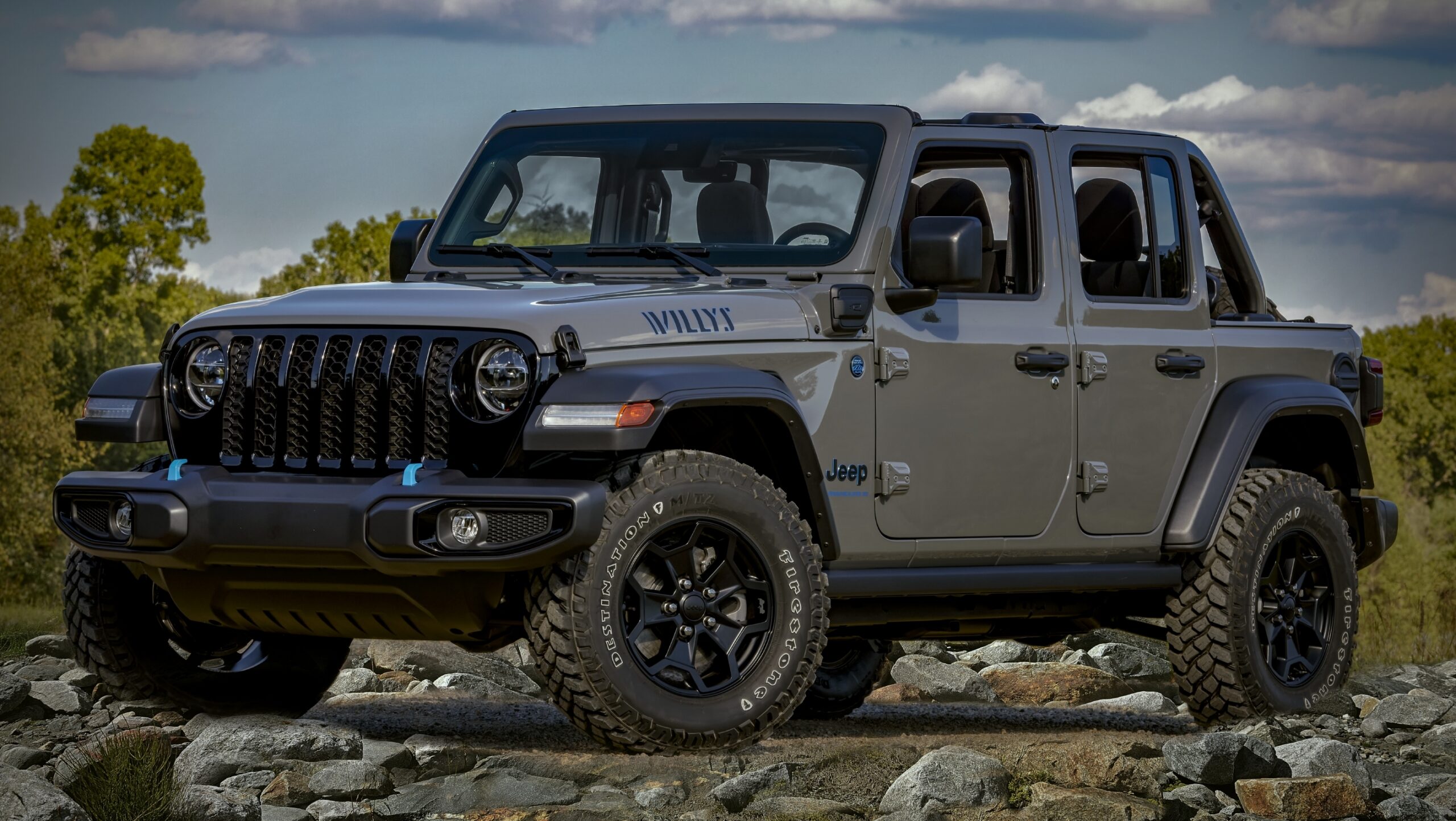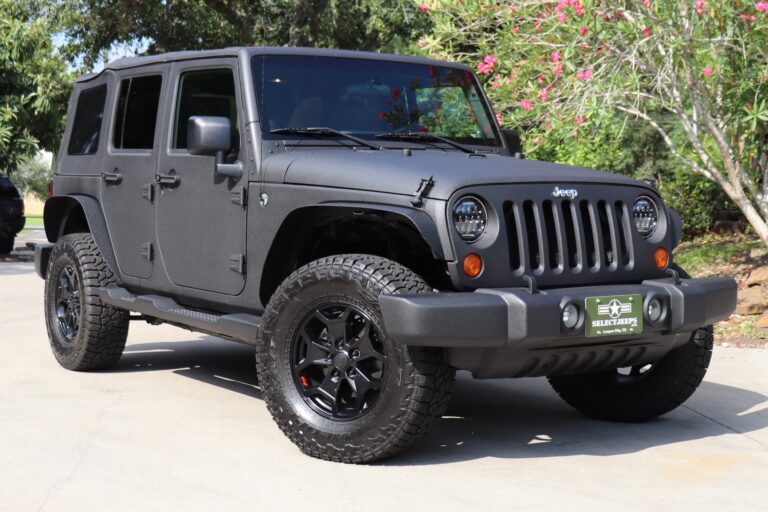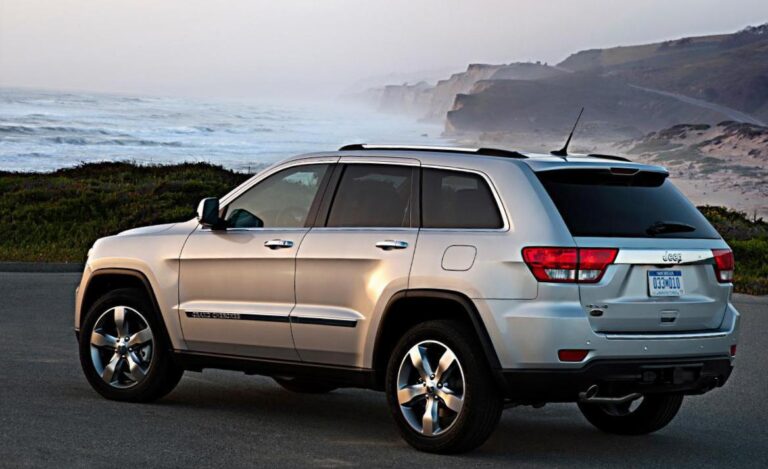Jeep Wrangler 2 Door Soft Top Kayak Rack: Your Ultimate Guide to Adventure
Jeep Wrangler 2 Door Soft Top Kayak Rack: Your Ultimate Guide to Adventure jeeps.truckstrend.com
The Jeep Wrangler, an icon of off-road freedom and open-air adventure, perfectly embodies the spirit of exploration. For many owners, this spirit extends beyond rugged trails to the serene waters of a lake or the exhilarating rush of a river. However, transporting a kayak on a 2-door soft-top Jeep Wrangler presents a unique challenge. Unlike vehicles with traditional hard roofs, the flexible nature of a soft top requires specialized solutions to securely carry your paddle craft. This comprehensive guide will delve into everything you need to know about outfitting your beloved Wrangler with a reliable kayak rack system, ensuring your next aquatic adventure is just a drive away.
The Unique Challenge of a Soft Top Wrangler
Jeep Wrangler 2 Door Soft Top Kayak Rack: Your Ultimate Guide to Adventure
Traditional roof rack systems typically mount directly to the vehicle’s fixed roof. The 2-door Jeep Wrangler with a soft top, however, lacks this rigid foundation. Simply clamping a rack onto the fabric would be impractical and dangerous, leading to damage to the soft top and an unstable load. This necessitates alternative mounting points that bypass the soft top entirely, usually involving the windshield frame, roll cage, rear bumper, or a combination thereof. The goal is to create a robust, elevated platform that can safely support the weight and length of a kayak while allowing for the soft top’s operation (folding back or removal) when desired.
Understanding Kayak Rack Systems for Soft Tops
To overcome the soft top challenge, manufacturers have developed innovative rack systems tailored specifically for the Wrangler. These systems prioritize stability, safety, and compatibility with the Jeep’s unique design.
Types of Kayak Rack Systems
-
Frame-Mounted Racks: These are the most common and robust solutions. They typically consist of two main components:
- Front Support: Attaches to the windshield frame or A-pillar, often utilizing existing bolt points or strong clamp mechanisms.
- Rear Support: Mounts to the rear roll cage, the rear bumper, or even an aftermarket spare tire carrier.
- Crossbars: Connect the front and rear supports, providing the horizontal platform for the kayak carriers.
- Pros: Highly secure, high weight capacity, generally allows soft top operation.
- Cons: Can be more expensive, installation might be more involved, semi-permanent.

-
Receiver Hitch Mounted Systems (Goal Post Style): While not a full roof rack, these systems can assist in kayak transport, especially for longer kayaks.
- A "goal post" style support extends upwards from the rear receiver hitch, providing a single rear support point.
- The front of the kayak is often supported by foam blocks or a temporary soft rack on the windshield frame, or even by a separate front frame-mounted bar.
- Pros: Easy to install/remove, good for occasional use, minimizes roof contact.
- Cons: Less stable than full frame-mounted systems, requires careful balancing and securing, might obstruct rear view or tailgate access.

-
Temporary/Inflatable Racks: For very occasional use or shorter trips, these offer a quick solution.
- Consist of inflatable or foam pads that sit on the roof (or sometimes directly on the roll cage bars) and straps that pass through the doors.
- Pros: Very affordable, portable, easy to store.
- Cons: Low weight capacity, less secure, can cause wear on the soft top if not padded correctly, not ideal for highway speeds or long distances.
Key Components of a Kayak Rack System
Regardless of the type, a complete kayak rack system typically includes:
- Towers/Uprights: The vertical components that attach to the Jeep’s frame.
- Crossbars: The horizontal bars that span between the towers, providing the base for carrying accessories. These come in various shapes (round, square, aerodynamic) with different load capacities and noise profiles.
- Kayak Carriers: These attach to the crossbars and specifically cradle or hold the kayak. Common types include:
- J-Cradles: Hold the kayak on its side, freeing up space on the crossbars.
- Saddles: Support the kayak flat, often with rollers for easier loading.
- Stackers: Allow multiple kayaks to be stacked vertically on their sides.
- Straps and Tie-Downs: Essential for securing the kayak to the carriers and the rack, including bow and stern tie-downs for added stability.
Key Considerations When Choosing a Rack
Selecting the right kayak rack for your 2-door soft-top Wrangler involves several critical factors:
- Compatibility with Soft Top Operation: Ensure the rack allows you to open, close, or remove your soft top without interference. Many frame-mounted systems are designed to sit above the soft top.
- Weight Capacity: Check the rack’s maximum load capacity and compare it to the weight of your kayak(s). Always factor in the weight of the carriers themselves.
- Ease of Installation/Removal: Do you want a semi-permanent solution or something you can easily take on and off? Some systems require drilling, while others use existing mounting points.
- Security: Look for racks with integrated locking mechanisms for both the rack itself and the kayak. This deters theft.
- Aerodynamics and Noise: Aerodynamic crossbars can reduce wind noise and improve fuel efficiency compared to square bars.
- Durability and Material: Racks are exposed to the elements. Look for robust materials like coated steel or aluminum that are resistant to rust and corrosion.
- Budget: Kayak racks range significantly in price. Determine your budget and balance it with your needs for capacity, security, and durability.
- Future Needs: Do you plan to carry other gear (bikes, cargo boxes) in the future? Some systems are more versatile than others.
Installation Guide (General Steps for Frame-Mounted Systems)
While specific steps vary by manufacturer, here’s a general overview of installing a frame-mounted kayak rack on a soft-top Wrangler:
- Read the Instructions: This is paramount. Every rack system has unique components and installation sequences.
- Gather Tools: You’ll typically need wrenches, sockets, Allen keys, and possibly a drill (if drilling is required, though many modern systems are bolt-on).
- Prepare the Vehicle: Park on a level surface. Remove any accessories that might obstruct installation (e.g., light bars near the windshield frame).
- Install Front Supports: These usually attach to the windshield frame or A-pillars. They might use existing bolts or specialized clamps. Ensure they are level and secure.
- Install Rear Supports: These will attach to the roll cage behind the rear seats, or to the rear bumper/tire carrier. Again, follow the manufacturer’s specific attachment method.
- Mount Crossbars: Once the front and rear towers/supports are in place, attach the crossbars. Ensure they are evenly spaced and level.
- Attach Kayak Carriers: Mount your J-cradles, saddles, or stackers onto the crossbars according to their instructions.
- Test and Secure: Double-check all bolts and connections to ensure they are tight and secure. Perform a gentle shake test on the entire rack system.
Tips for Safe Kayak Transport
- Proper Loading: Lift the kayak onto the carriers carefully. If using J-cradles, load the kayak on its side. For saddles, lay it flat.
- Secure Straps: Use high-quality, non-stretching straps. Loop them over the kayak and through the rack’s designated points. Cinch them down tightly, ensuring no slack.
- Bow and Stern Tie-downs: These are CRUCIAL for soft-top Wranglers. They prevent the kayak from lifting or shifting, especially at highway speeds. Attach one strap from the front of the kayak to a secure point on the front bumper/frame, and another from the rear of the kayak to the rear bumper/hitch.
- Check Clearance: Before driving, ensure there’s adequate clearance, especially if going under low bridges, in parking garages, or through drive-thrus.
- Driving Safely: Drive slower than usual, especially on turns and in windy conditions. Be mindful of increased wind resistance and higher center of gravity.
- Periodic Checks: Stop after the first 10-15 miles of driving and periodically thereafter to check strap tension and rack security.
Maintenance and Longevity
To ensure your kayak rack lasts for years of adventure:
- Regular Checks: Periodically inspect all bolts, clamps, and welds for signs of loosening or damage.
- Cleaning: Wash the rack with mild soap and water, especially after exposure to saltwater or harsh road chemicals, to prevent corrosion.
- Lubrication: If your rack has moving parts or locking mechanisms, lubricate them regularly.
- Storage: If you remove the rack for extended periods, store it in a dry, protected area.
Challenges and Solutions
- Soft Top Wear/Damage: Choose frame-mounted systems that lift the kayak entirely off the soft top. If using temporary pads, ensure ample padding and inspect the soft top regularly for friction points.
- Wind Noise/Drag: Opt for aerodynamic crossbars. Proper installation and securing of the kayak can also minimize noise. Some whistling might be unavoidable.
- Loading Difficulty: Kayaks can be heavy and awkward. Consider loading assistance accessories like rollers or slide-out bars, or get a friend to help.
- Security Concerns: Invest in a rack system with integrated locks for both the rack and the kayak. Never leave your kayak unattended for long periods in high-risk areas.
Jeep Wrangler 2 Door Soft Top Kayak Rack Price Guide
The cost of a kayak rack system for a Jeep Wrangler 2-door soft top varies significantly based on the type, brand, materials, and features. Here’s an estimated price range for common categories:
| Rack System Type | Description | Estimated Price Range (USD) | Key Features / Notes |
|---|---|---|---|
| Temporary / Inflatable Racks | Foam blocks or inflatable tubes with straps that run through the door frames. Ideal for very light, occasional use. | $50 – $150 | Very portable, easy to store, low weight capacity (1-2 kayaks), not recommended for long distances or high speeds. Can cause wear on soft top if not used with care. |
| Receiver Hitch "Goal Post" System | A single T-bar or goal post that mounts into the rear hitch receiver, supporting the rear of the kayak. Requires front support (e.g., foam blocks on windshield). | $150 – $350 | Easy to install/remove. Good for occasional transport of longer kayaks. Less stable than full rack systems. May require additional front support solution. |
| Basic Frame-Mounted System | Utilizes existing Jeep body/frame points (e.g., windshield frame, roll cage, bumper) for front and rear supports. Typically includes square or round crossbars. | $400 – $800 | Provides a stable platform above the soft top. Allows soft top operation. Good for 1-2 kayaks. Installation may require some tools and time. May not include kayak carriers (J-cradles, etc.). |
| Premium Frame-Mounted System | Robust, heavy-duty systems with engineered attachment points, often designed for multiple kayaks or other gear. May feature aerodynamic crossbars, integrated locks, and modular designs. | $800 – $1500+ | High weight capacity, superior stability and durability. Often designed for easy removal/installation once initial setup is done. May include more advanced features or higher quality materials. Often comes from specialized Jeep accessory manufacturers. Kayak carriers usually sold separately. |
| Complete Package (Rack + Carriers) | A frame-mounted system that includes crossbars and a set of specific kayak carriers (e.g., J-cradles or saddles). | $600 – $1800+ | Convenience of a bundled solution. Ensures compatibility between rack and carriers. Price varies greatly based on rack type (basic vs. premium) and carrier type/quantity. |
Note: Prices are estimates and can vary based on brand, retailer, sales, specific model year compatibility, and material (e.g., steel vs. aluminum). Additional accessories like specific kayak cradles, locking mechanisms, and tie-down straps are often sold separately.
Frequently Asked Questions (FAQ)
Q1: Can I drive with my soft top down/folded back while the kayak rack is installed?
A1: Many frame-mounted kayak rack systems are specifically designed to allow for soft top operation (folding back or removal) without interference. However, always check the manufacturer’s specifications for your particular rack. You generally cannot drive with the soft top completely removed while a kayak is loaded, as the soft top often provides some support or a seal for the rack system.
Q2: Will a kayak rack damage my soft top?
A2: A properly installed frame-mounted rack should not touch or damage your soft top. These systems are designed to create a platform that sits above the soft top. Temporary or poorly installed racks that rest directly on the fabric can cause wear, tears, or scuffs over time.
Q3: How fast can I drive with a kayak on my Wrangler?
A3: While there’s no universal speed limit, it’s generally recommended to drive at reduced highway speeds (e.g., 55-65 mph) when transporting a kayak. High speeds increase wind resistance, put more stress on the rack and tie-downs, and can lead to excessive noise or instability. Always follow the rack manufacturer’s speed recommendations.
Q4: Do I really need front and rear tie-downs (bow and stern lines)?
A4: Absolutely. For any roof-mounted load, especially long items like kayaks on a vehicle with a flexible roof structure like a soft-top Wrangler, bow and stern tie-downs are critical. They prevent the kayak from lifting, shifting, or swaying, significantly improving stability and safety, particularly at highway speeds or in crosswinds.
Q5: Can I use a universal kayak rack on my Jeep Wrangler 2-door soft top?
A5: Most "universal" roof racks are designed for vehicles with fixed roof rails or gutter systems, which a soft-top Wrangler lacks. You need a rack specifically designed to mount to the Wrangler’s frame, windshield, or roll cage. Attempting to force a universal rack can be unsafe and damage your Jeep or kayak.
Q6: Is professional installation required for a soft top kayak rack?
A6: While many frame-mounted kayak racks are designed for DIY installation, some require specific tools or expertise. If you’re uncomfortable with the process or if the instructions seem complex, professional installation from an automotive accessory shop is recommended to ensure safety and proper fitment.
Conclusion
The dream of hitting the trails and then paddling out onto the water is entirely achievable for 2-door Jeep Wrangler soft top owners. While the soft top presents unique challenges, the market offers a variety of robust and reliable kayak rack solutions designed specifically for your vehicle. By understanding the different types of racks, considering key factors like compatibility and capacity, and following proper installation and loading procedures, you can confidently transport your kayak to any destination. Investing in the right rack not only secures your valuable gear but also unlocks a new dimension of adventure, seamlessly blending the thrill of off-roading with the tranquility of paddling. Get ready to explore more – your Jeep and kayak are calling!




